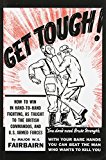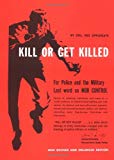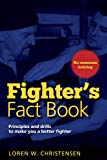Japanese Martial Arts
The martial arts have influenced Japan in many ways. Many of these arts have been passed down from ancient times and are still even practiced today. In my report, I will examine the major Japanese arts and tell how they have influenced Japan. First, however, I will give a little background for these arts.
The original word for Japanese martial arts was bujutsu, or “art of the military.” This had more to do with physical techniques than philosophical and mental. The physical, mental and philosophical techniques were combined to create budo, or way of the military. Budo was also used to describe the code of the samurai in feudal days.
Karate
Karate is actually a Japanese word meaning “empty hand.”(Nakayama 80) This applies that no weapons other than the hands are needed to attack or defend. Karate is categorized into four parts — physical conditioning, self-defense, mental conditioning, and sport. A typical Karate tournament would include demonstrations of breaking, weapons use, self-defense techniques, tradition and open forms and the most exciting competition, sparring.
Nobody is quite sure when Karate was created, but we do know that an Indian priest, Daruma, a brilliant doctor, Hua T”o, and a popular general of the
Sung Dynasty, Yuen Fei, are considered its forefathers. We also know that it was developed in Okinawan islands from Chinese techniques and local innovations as a system of self-defense. In the 1920’s, Gichin Funakoshi, an Okinawan schoolteacher taught a method of karate to Japan which caught on.
Sumo
Sumo in its early days tended to be violent with no holds barred. During the reign of Emperor Saga (r. 809-23) the practice of sumo was encouraged as a martial art and rules were established and techniques cultivated. It is impossible to determine whether the art of sumo is a completely native sport or whether similar forms of grappling from other parts of Asia and Eurasia influenced it. Grappling is a rather basic, instinctive sport practiced mostly by men. In fact, the first grappling match ever described went as so, “lowly mortals grappled for quite a while until one finally rendered some devastating kicks to the other’s stomach and solar plexus. The one who was kicked was mortally wounded, and the victor went cheered.”(Newton 103)
The earliest written mention of sumo is found in the Kojiki (Record of Ancient Matters), a book from the year 712. According to the book, about 2,500 years ago, the gods Takemikazuchi and Takeminakata grappled along the Japan Sea coast in what is now Shimane-ken, until the latter finally lost. Takemikazuchi, who is said to have established the imperial family from which emperors could trace their roots, gave control of the archipelago to the Japanese people. The Japanese did not keep any written records until the 8th century. This means it is impossible to know, aside from the legend, exactly when the art of sumo first developed in Japan. However, ancient wall paintings indicate the origin is very old.
Jujitsu
Jujitsu is a 3,000-year-old martial art. It originated from a blending of native sumo and fighting techniques in Japan with the soft aspects of Kung Fu from China. Jujitsu incorporates empty hand defense and offense as well as bone setting and healing techniques for use by the instructor to fix any injuries occurring during training. It is also the predecessor of Aikido and Judo.
One popular style of jujitsu is Danzan Ryu (the Cedar Mountain System.) Seishiro Okazaki founded Danzan Ryu Jujitsu. He got tuberculosis and sought to build his strength in martial arts. Affecting a cure due to the 6 days per week workout, massage and healing by his sensei, he dedicated his life to study of Budo & healing.
Another style of jujitsu is ninjitsu. Ninjitsu is the art of invisibility. Along with its jujitsu background, it can also be traced back to Chinese spying techniques. Ninjas were used in the sixth century to gain information about the enemy and sabotage his operations. However, we now call ninjas anybody who practices this art. Ninjas can be both male and female, but must possess three abilities. They must be a hunter, a wizard and a warrior. As with many Eastern martial arts, there is an emphasis on meditation in order to cultivate the mind and body. Ninjas place as much importance on spiritual and mental aspects of their art as on the physical.
Aikido
Aikido was developed from Jujitsu. It is said to be founded from Prince Teijun, the sixth son of Emperor Seiwa. From here, many generations later, in 1868, Sokaku Takeda began teaching the art to people outside the family. Takeda’s most outstanding pupil was Morihei Ueshiba. Ueshiba added his own techniques from other arts and became a teacher of Aikido. World War II spread Aikido greatly as soldiers were taught techniques and brought them back to their own countries.
Aikido owes its development to teachers and practitioners who risked their lives developing new techniques. One major principle of Aikido is that strength consists of a straight but flexible mind and a body tempered by hard practice. “Through aikido, one can become perfectly attuned to his opponent. One can sense his intentions and turn his movements to one’s own advantage.”(Bennett 56)
Judo
Judo is translated as the “gentle way.” It can be described as a fun sport, an art, a discipline, a recreational or social activity, a fitness program, a means of self-defense or combat, or a way of life. Judo is best known for it’s spectacular throwing techniques but also involves considerable grappling on the ground utilizing specialized pins, control holds, arm locks, and Judo choking techniques.
Judo develops self-discipline and respect for oneself and others. It provides the means for learning self-confidence, concentration, and leadership skills, as well as physical coordination, power, and flexibility developing complete body control, fine balance, and fast reflexive action. Training gives a person an effective self-defense system if the need arises. Skill, technique and timing, rather than the use of brute strength, are the essential ingredients for success in Judo.
Judo was founded from feudal Japan in 1882 from art of jujitsu. It was introduced to the Olympic Games in 1964. There are separate weight divisions for men and women and boys and girls.
Kendo
Kendo can be described as Japanese fencing. The goal of Kendo is to develop one’s character, i.e. self-confidence, courtesy, and respect for others. Kendo is demanding both physically and mentally.
The equipment used for Kendo is the bamboo sword (shinai) and a set of protective armor (bogu.) There are four general areas to attack, subdivided into left and right sides of the body - each worth one point. An official Kendo match is a three-point match and has a five-minute time limit. The player who scores two points first is the winner. For practice, the repetitive practice of basic movements is stressed in order to acquire the ability of moving without thinking.
Conclusion
Japanese arts encourage a higher awareness of mind, body and spirit. This brings about one’s consciousness of their environment. It can also give one a stronger sense of concentration. The arts started as simple methods of attack and defense used in serious combat that consisted of primitive hand-to-hand and “stick fighting” techniques. At times, a small and comparatively weak man would overcome a bigger opponent; and when the reason for his victory was appreciated, a new method would be created. Over the years, these techniques were refined and developed and still stand today.
Bibliography
- Anonymous. How to Become a Ninja : Secrets from Ashida Kim’s Training Camp. Citadel Publications, 1995
- Bennett, Gary. Aikido : Techniques & Tactics (Martial Arts Series). Human Kinetics, 1997
- Draeger, Donn F. Classical Budo : The Martial Arts & Ways of Japan. Weatherhill, 1996
- Nakayama, Masatoshi. Best Karate : Bassai, Kanku. Kodansha, 1980
- Newton, Clyde & Toff, Gerald C. Dynamic Sumo. Kodansha, 1995
- Shihan, Craig. Teacher of Judo and Budo.
- Stevens, John. Abundant Peace : The Biography of Morihei Ueshiba, Founder of Aikido. Shambhala Publications, 1987



